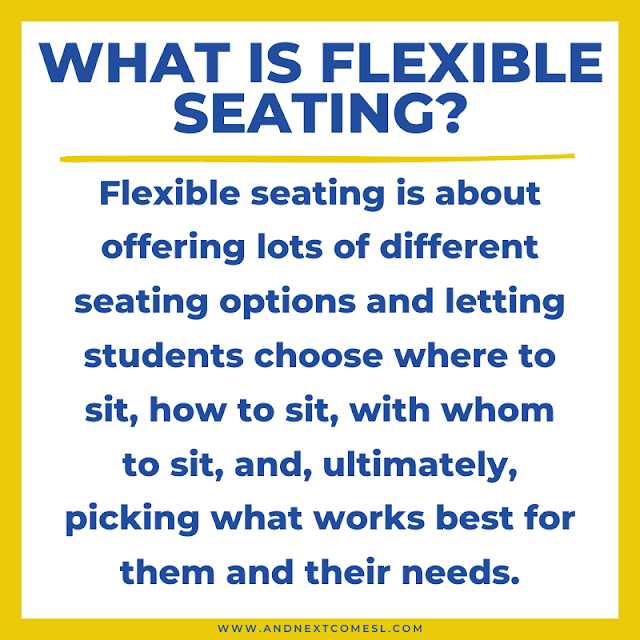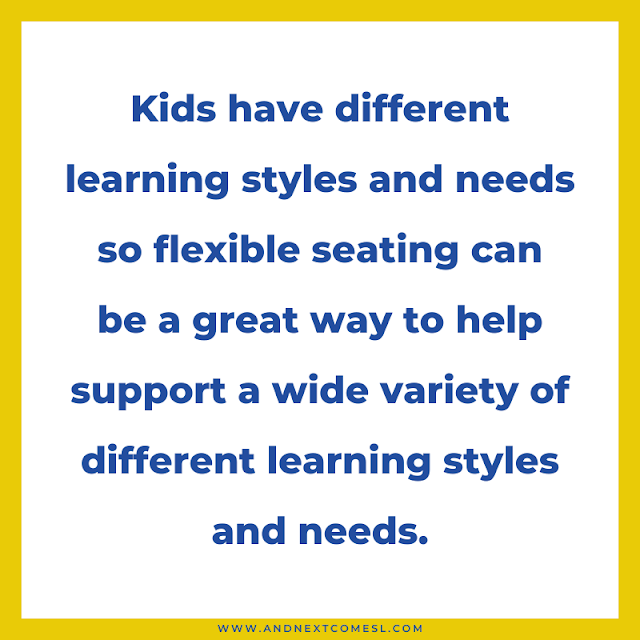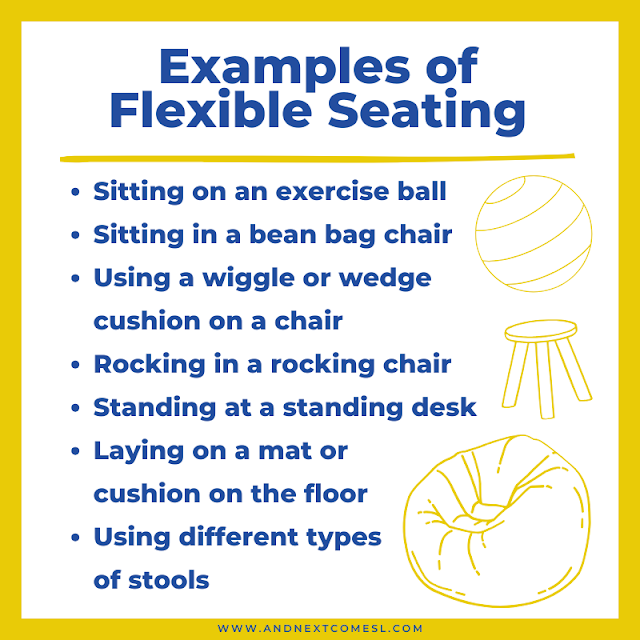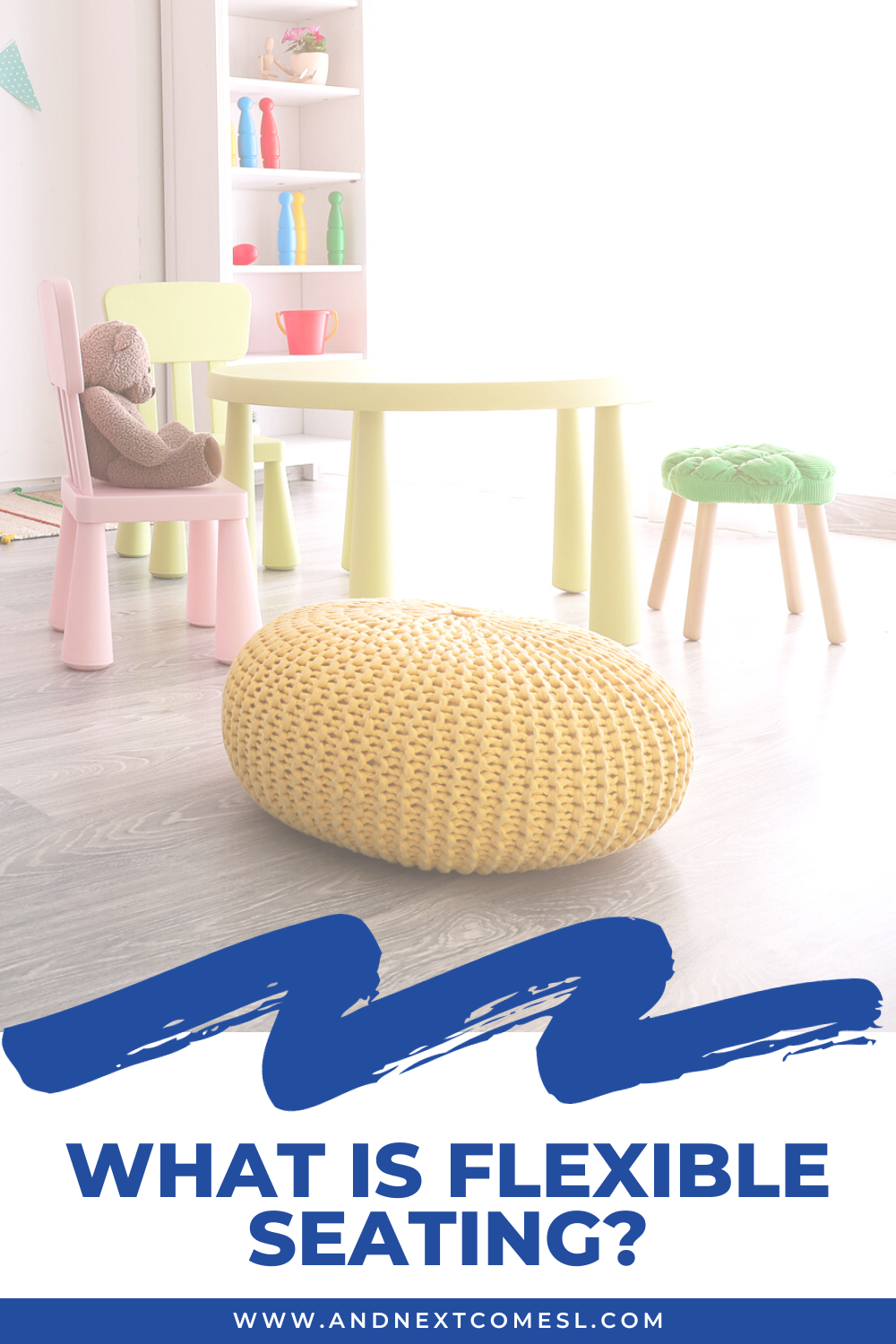Whether you are an educator or a parent (or some other professional who frequents school IEP meetings and whatnot), then you've likely heard of the term flexible seating. Maybe you're not entirely sure what is meant by that term and you're looking to learn more.
Well, you're in luck. Below we'll answer the question what is flexible seating? Then we'll look at a list of examples of what that looks like in the classroom.
That way you'll know whether or not it's something you want to include in your classroom (for any teachers reading this) or advocate for your child to have access to (for any parents reading this). So let's dig in!
What is Flexible Seating? A Definition
Flexible seating is about providing choices and a variety of different seating options for students in the classroom.
Much like the name implies, it's about giving students the flexibility and freedom to choose where they want to sit, how they want to sit, with whom they want to sit, and picking what works best for them.
Flexible seating allows for more movement and independence, while helping meet the needs of more students. After all, not all kids learn their best when forced to sit crisscross applesauce on a mat. Some kids need to move and wiggle while listening and learning.
Remember, kids have different learning styles and needs so flexible seating can be a great way to help support a wide variety of different learning styles and needs.
Examples of Flexible Seating
Now that you have a better understanding of what flexible seating is, let's take a look at some examples of what that might look like in the classroom. Keep in mind that classrooms can use a mix of these ideas alongside conventional desks, tables, and chairs.
Also, if you are new to the idea of flexible seating and you aren't sure where to start when it comes to incorporating other seating options into your classroom, this list can be super helpful.
Here are some example ideas that you might want to consider:
- Sitting on an exercise ball while working at a table or desk
- Sitting in a bean bag chair or in a sensory tent while reading
- Using a wobble/wiggle cushion or wedge cushion on a chair while working at a desk or table
- Laying on a mat or cushion on the floor while working on schoolwork
- Collaborating with other students while sitting on a couch together
- Rocking in a rocking chair while working at a table or desk
- Working with other students at a standing desk
- Kneeling or sitting cross-legged on pillows while seated at a low table
- Sitting on a wobble/wiggle cushion on the floor while working at a low table
- Using different types of stools, such as a wobble stool, while working at a desk or table
- Sitting in a scoop rocker chair during circle time
As you can see, there are lots of different seating options that you could include in a classroom. So you might have to weigh the pros and cons of each when deciding what to include.
Of course, you also have to consider your students' needs, the size and shape of the classroom, budgets, your teaching style and needs, etc. There are also lots of great DIY options out there if you are needing something more budget friendly.
Recap of Flexible Seating in a Classroom
Whether you're a skim reader or just want a quick recap, here's what you need to know about flexible seating:
- Flexible seating is about offering lots of different seating options and letting students choose where to sit, how to sit, with whom to sit, and, ultimately, picking what works best for them and their needs.
- Kids have different learning styles and needs so flexible seating can be a great way to help support a wide variety of different learning styles and needs.
- Classrooms can offer a mix of flexible seating options alongside conventional desks, tables, and chairs. It might be as simple as adding something to a chair (e.g., a wiggle cushion) or swapping a chair out for a different type of chair (e.g., a rocking chair).
- When deciding to use flexible seating, you'll have to weigh the pros and cons of using different seating options, but you'll also have to consider your students' needs, the size and shape of the classroom, budgets, your teaching style and needs, and more.
So that's a quick overview and answer to the question: what is flexible seating? You can learn more about the pros and cons, as well as the benefits, in other posts.








